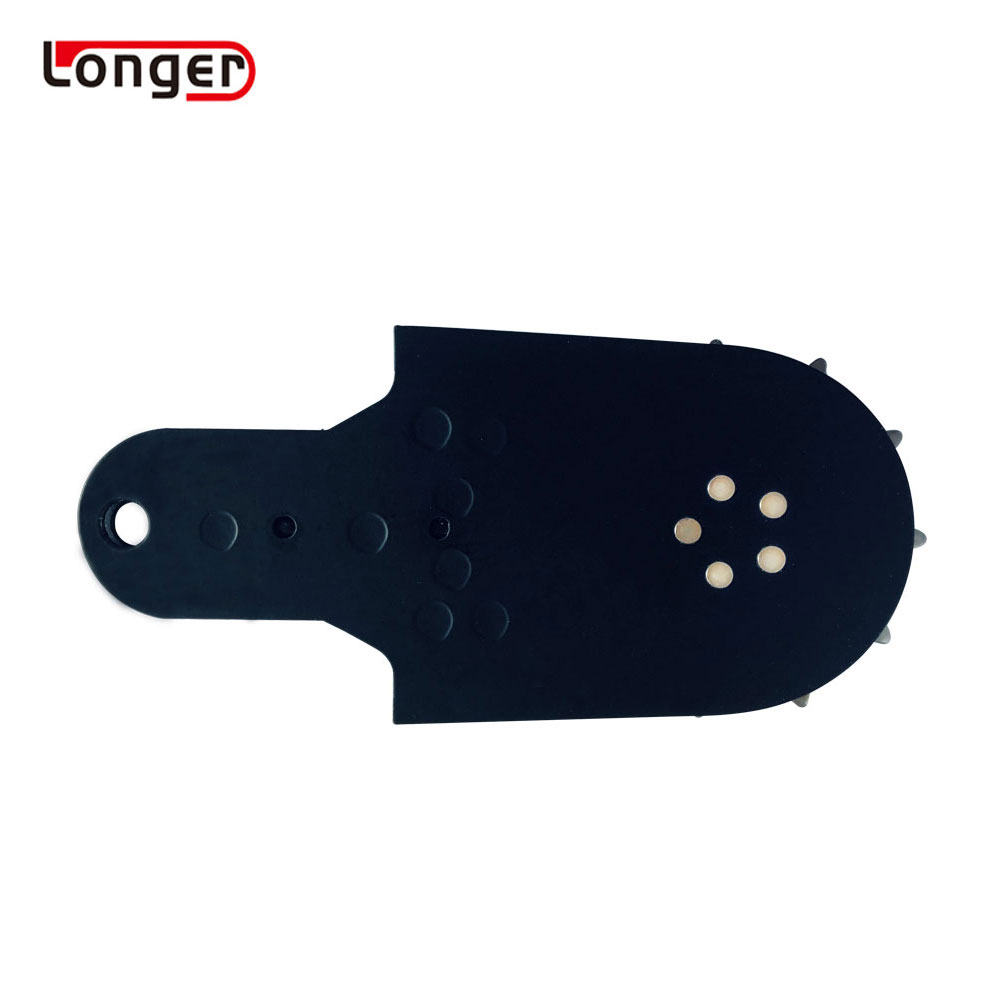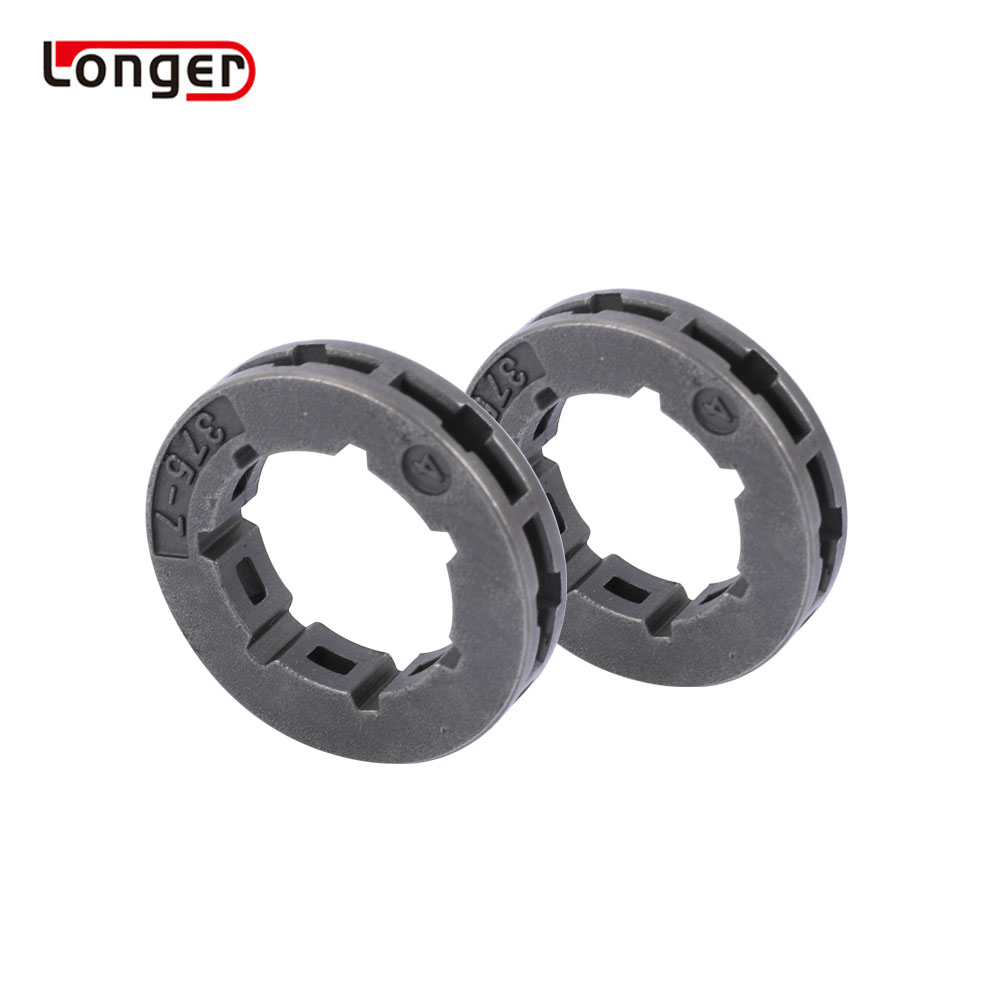The chain saw uses a two-stroke, single-cylinder, forced-air-cooled gasoline engine as the power, and various sawing tasks are completed by the high-speed operation of the chain saw chain. Let's understand how the chain saw achieves the high-speed operation of the saw chain. 1. The structure of the chain saw As a whole system, the chain saw is divided into ignition system, oil supply system, intake and exhaust system, lubrication system, cooling system, starting system, etc. The cylinder is the core component of the chain saw, including the inner wall, heat sink, combustion chamber, etc. There are three holes on the cylinder, namely the intake hole, the exhaust hole and the ventilation hole. These three holes are respectively closed by the piston at a certain time. The complete sealing of the cylinder is a necessary condition for the continuous operation and power generation of the chain saw. The cylinder is mounted on the crankcase. The piston can reciprocate in the cylinder and seal the cylinder from the lower part of the cylinder to form a sealed space. The fuel burns in the sealed space, and the generated power pushes the piston to move. The reciprocating motion of the piston pushes the crankshaft to rotate through the connecting rod, and the crankshaft outputs power from the flywheel end. The crank connecting rod mechanism is composed of piston group, connecting rod, crankshaft and flywheel, which is the main part of the power transmission of the chain saw. The piston group is composed of pistons, piston rings, piston pins, etc. The piston has a cylindrical shape with a piston ring installed on it to seal the cylinder when the piston reciprocates to prevent gas leakage in the cylinder. The piston pin is cylindrical and penetrates the pin hole on the piston and the small end of the connecting rod to connect the piston and the connecting rod. The connecting rod is divided into three parts: big end, small end and shaft. The big end is connected with the crank pin of the crankshaft, and the small end is connected with the piston pin. When the connecting rod is working, the small head end reciprocates with the piston, and the big head end rotates around the axis of the crankshaft with the crank pin, and the shaft makes a complex swing motion. The function of the crankshaft is to convert the reciprocating motion of the piston into rotary motion, and transfer the work done by the expansion stroke through the flywheel mounted on the rear end of the crankshaft. The flywheel can store energy so that the other strokes of the piston can work normally and the crankshaft can rotate evenly. The intake and exhaust system usually consists of an air filter, an intake pipe, an exhaust pipe and a muffler. In order to supply fuel into the cylinder, the chain saw is equipped with a fuel supply system. The air and fuel are mixed at a certain concentration through a carburetor installed at the inlet end of the intake pipe, and then fed into the cylinder through the intake pipe. The electric spark controlled by the chain saw ignition system is ignited at regular intervals. When the fuel in the cylinder of the chain saw is burning, the piston, cylinder and other parts are heated, and their temperature rises. In order to ensure the normal operation of the chain saw and prevent the piston, cylinder and other parts from being damaged by overheating, a cooling system must be provided. The flywheel blades and the wind channel formed by the starter cover, housing and other parts constitute the cooling system of the chain saw. The chain saw cannot automatically turn from the parking state to the running state, and the crankshaft must be turned by external force to start it. This device that generates external force is called a starting device. Second, the working principle of the chain saw In order for the chain saw to work continuously, the piston must return to its original position after pushing the crankshaft in order to push the crankshaft again, which requires the piston to reciprocate in the cylinder. The movement of the piston from one end of the cylinder to the other end of the cylinder is called a stroke. The working cycle of a chain saw consists of processes such as air intake, compression, combustion and expansion, and exhaust. The first stroke: the piston moves upward from bottom dead center, the air intake, exhaust, and ventilation holes on the cylinder are closed at the same time, and the mixed gas entering the cylinder is compressed; the piston continues to move upward to further compress the mixed gas and intake The hole will be exposed as the piston moves up, and the combustible mixture flows into the crankcase through the underside of the piston. Second stroke: When the piston is compressed to near the top dead center, the spark plug just jumps over, ignites the combustible mixture, and the gas expands to push the piston down to do work. As the piston moves down, the intake port is closed, and the combustible mixture sealed in the crankcase is compressed; when the piston approaches bottom dead center, the exhaust port opens, and exhaust gas rushes out due to strong pressure; then the ventilation hole opens, The pre-compressed combustible mixture rushes into the cylinder through the ventilation channel to drive off the exhaust gas and perform the ventilation process. The exhaust process and intake process of the chain saw are collectively called the air exchange process. The function of air exchange is to remove the exhaust gas from the previous cycle and supply fresh gas to this cycle so that as much fuel as possible is completely burned in the cylinder , So that the chain saw achieves greater power. The quality of the air exchange process directly affects the use of the chain saw. We should reduce the flow resistance of the intake and exhaust systems, so we need to clean the carbon deposit in the channel and clean the air filter regularly. 3/8"LP saw chains 











